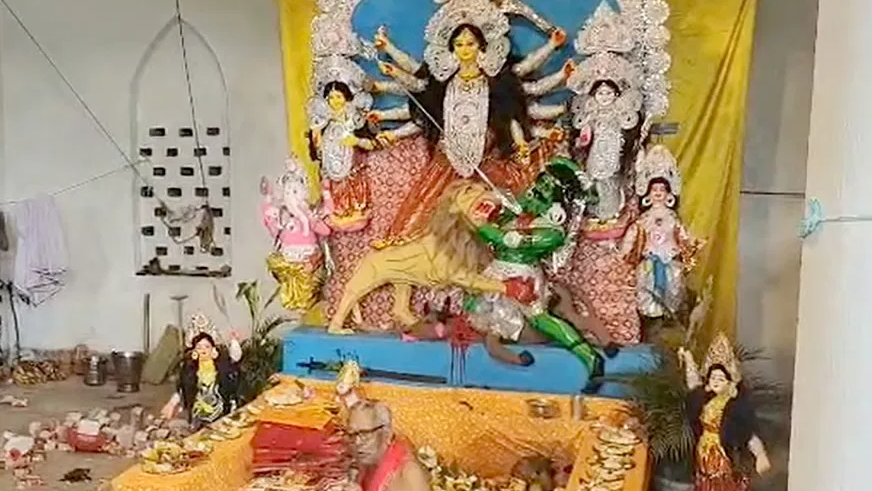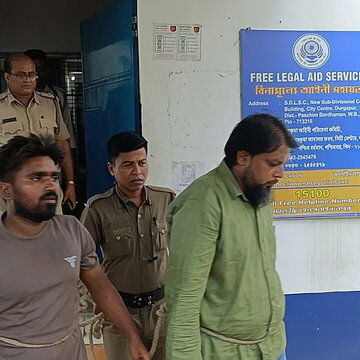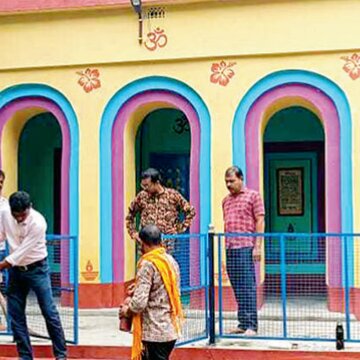The Ashtami puja of Goddess Durga was conducted with regal heritage and grandeur at the Kathamiya temple of Madanmohan Thakurbari in Cooch Behar. The puja adhered to the customs and rituals of the royal era. Not just from Cooch Behar, but devotees from far and wide came to witness the Mother's puja.
According to sources from the Devottva Trust Board, following tradition, the Durga idol at the Kathamiya temple is still crafted using the Raj-era framework. Every year after immersion, this framework is retrieved from the river. Subsequently, the framework is slightly repaired, coated with clay, and a new idol is sculpted. This year too, the same process was followed.
The idol of the 'Bardevi' (main goddess) of Cooch Behar has a blood-red hue and a fearsome appearance. Only Kartik and Ganesh flank the goddess. Instead of Lakshmi and Saraswati, two companions of the goddess - Jaya and Vijaya - are present. Mahishasura holds a lion in his right hand and a tiger in his left. From Saptami to Dashami, there is a provision for daily sacrifices during the puja. A total of three goats, one duck, three pairs of pigeons, and catfish, apart from two buffaloes on Ashtami, were sacrificed. All in all, on Ashtami, many people from Cooch Behar, besides worshipping at their local pujas, came here to offer anjali. This year was no exception.
On Tuesday, the Ashtami puja of Goddess Durga was performed at the Kathamiya temple of Madanmohan Thakurbari in Cooch Behar, following the customs and rituals of the royal era. Not just from Cooch Behar town, but at least five thousand people from distant places had come here on this day. Besides offering anjali at the Kathamiya temple, everyone also had a darshan of Madan Mohan. History suggests that around 1510, Maharaja Biswa Singh - then known as 'Bishu' - playfully began worshipping an imaginary goddess by planting dry mayna wood and bamboo. From there originated the tradition of puja using mayna wood.











